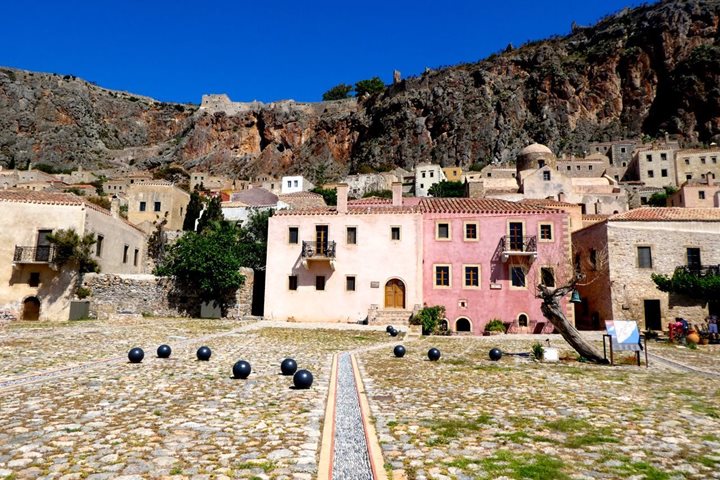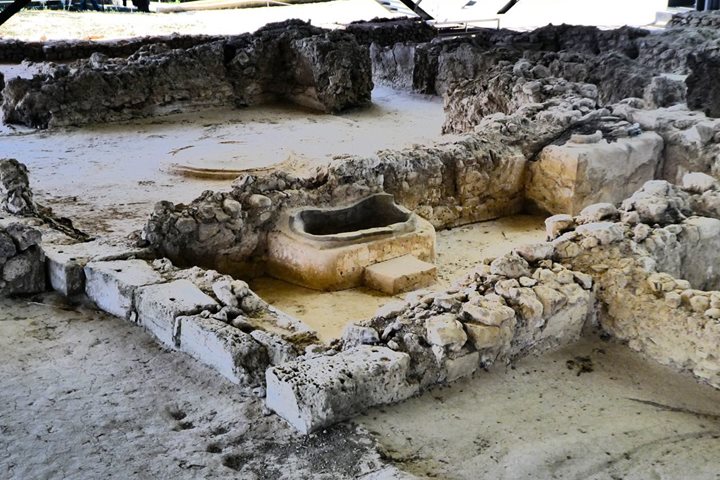As the sun rose above the eastern horizon, when, if by magic, the great stone ramparts of Fort St Elmo shed their cold gunmetal grey appearance—stone by stone when struck by the golden rays of dawn’s sunlight. Sea Cloud slipped its moorings lines and headed out of the Grand Harbour and into the Mediterranean for our first morning at sea. The strong gale force winds of the past few days had all but blown themselves out, leaving us with gentle westerly winds and rapidly calming seas. We had the opportunity to marvel at the crew going aloft just after breakfast as we relaxed in our deck chairs and felt the sun and salt breeze on our faces–a perfect way to get over the rigors of a long transatlantic flight.
After a morning at sea and a lunch of fresh grilled sea bream, we dropped anchor off the small port of Mgarr on the southern tip of Gozo, the second largest island in the Maltese Archipelago. We shuttled to shore, through the choppy seas, in Zodiacs and from there we made our way to the waiting coaches for a short ride to the massive ruins of the UNESCO World Heritage megalithic temple of Ggantija. While local folklore once held that these stone temples were built by a race of mythological giants that once ruled the islands, archaeologists have shown that the “temple builders” of Malta were very skilled artisans who, with nothing more than stone tools, engineered and built these structures 1000 years before the Pyramids in Egypt. The Ggantija complex consists of two monumental temples within a single outer wall that faced out onto an oval courtyard. Each temple has a single aisle with matched pairs of corbelled chambers or apses off each side. Despite the weathered and pitted appearance of its massive orthostats (large upright stones) Ggantija (3,600 – 3,200 B.C.E.) is the best preserved of the early phase of temple building on the islands. Archaeologists believe that the stones were once covered with a smooth coat of red ochre colored plaster and that the whole structure had a domed roof.
The new Visitors Centre held a superb collection of archaeological finds from not only the temple, but also the recently excavated Xaghra Circle, once a subterranean burial chamber. The small clay and limestone statuettes of rather corpulent figures are thought to represent the ideal, rather than reality; so their ample proportions signify health, prosperity, and fertility. One of the more striking finds was a part of a clay bowl that was decorated by a band of plumed birds in flight, one of the most intricately decorated shards of pottery from anywhere in the Neolithic world.
All too soon it was time to make our way back to Sea Cloud and the resplendent Captain’s “Welcome Dinner” complete with champagne and local oysters! A perfect end to a wonderful first day on our “Voyage to Antiquity”!







